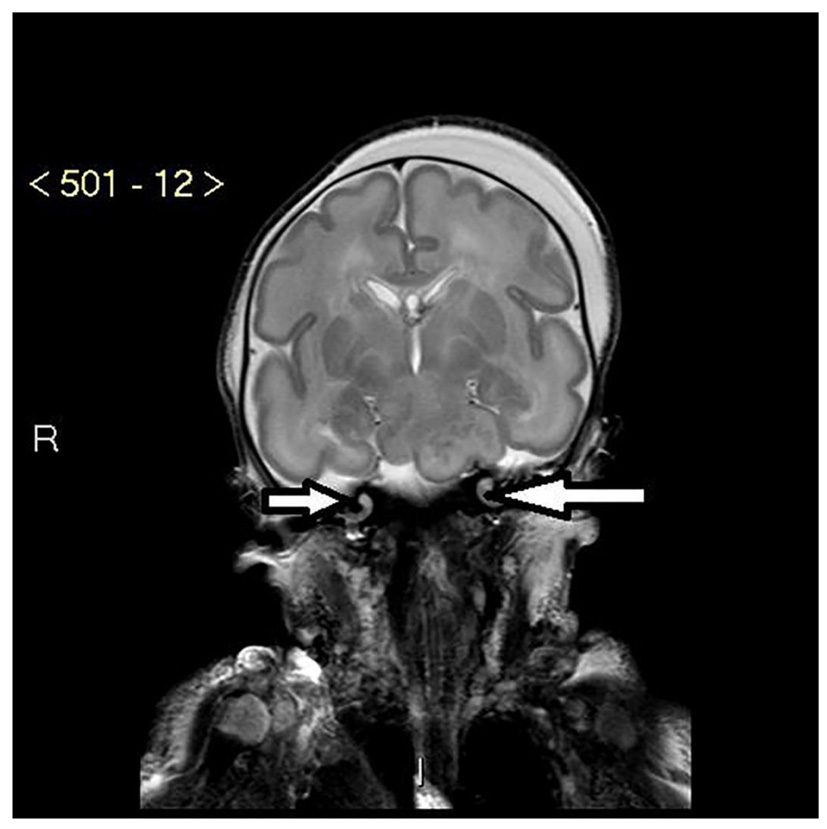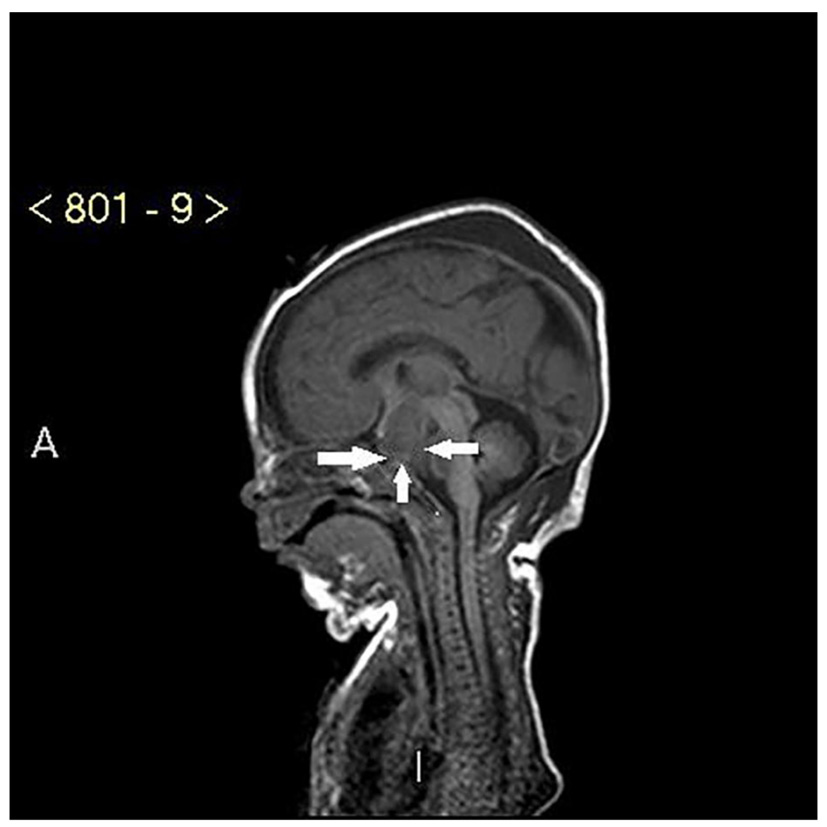
Figure 1. MRI of bilateral hypoplastic cochlea with reduced number of apical and basal turns (white arrows).
| International Journal of Clinical Pediatrics, ISSN 1927-1255 print, 1927-1263 online, Open Access |
| Article copyright, the authors; Journal compilation copyright, Int J Clin Pediatr and Elmer Press Inc |
| Journal website http://www.theijcp.org |
Case Report
Volume 4, Number 2-3, October 2015, pages 154-157
Congenital Hyperinsulinism and Cochlear Hypoplasia in a Rare Case of Pallister-Hall Syndrome
Figures


Tables
| Hypothalamic hamartoma | Non-enhancing mass in the floor of the third ventricle posterior to the optic chiasm |
| Mesoaxial polydactyly | Presence of six or more well-formed digits with a “Y”-shaped metacarpal or metatarsal bone |
| Post axial polydactyly (PAP) | PAP-A is the presence of a well-formed digit on the ulnar or fibular aspect of the limb. PAP-B is the presence of a rudimentary digit or nubbin in the same location |
| Bifid epiglottis | Midline anterior-posterior cleft of the epiglottis that involves at least two-thirds of the epiglottic leaf. |
| Other features | Imperforate anus, renal abnormalities including cystic malformations, renal hypoplasia, ectopic ureteral implantation, genitourinary anomalies including hydrometrocolpos, pulmonary segmentation anomalies including bilateral bilobed lung. |
| Beckwith-Wiedemann |
| Kabuki |
| Trisomy 13 |
| Mosaic Turner |
| Soto |
| Usher |
| Timothy |
| Costello |
| Central hypoventilation syndrome |
| Leprechaunism (insulin resistance syndrome) |